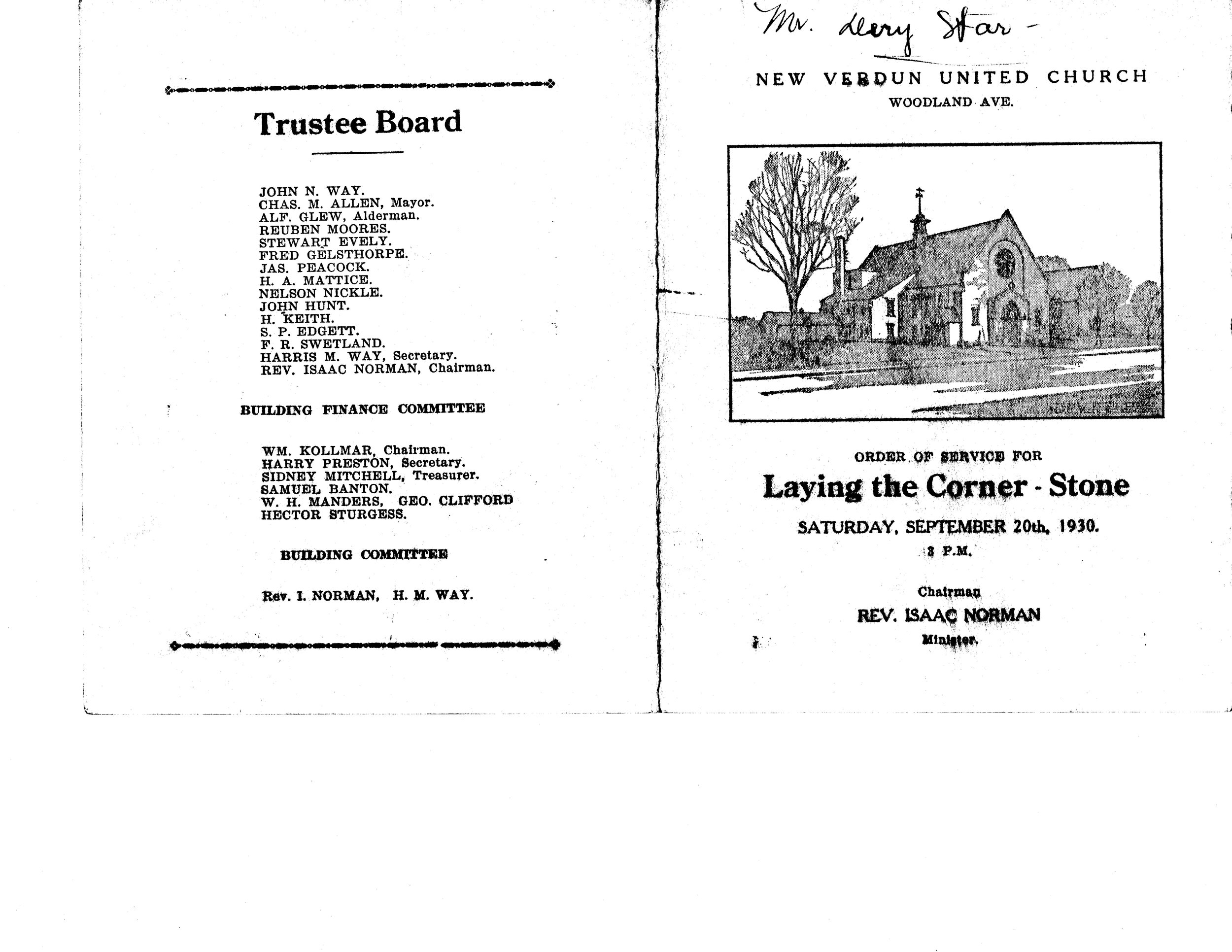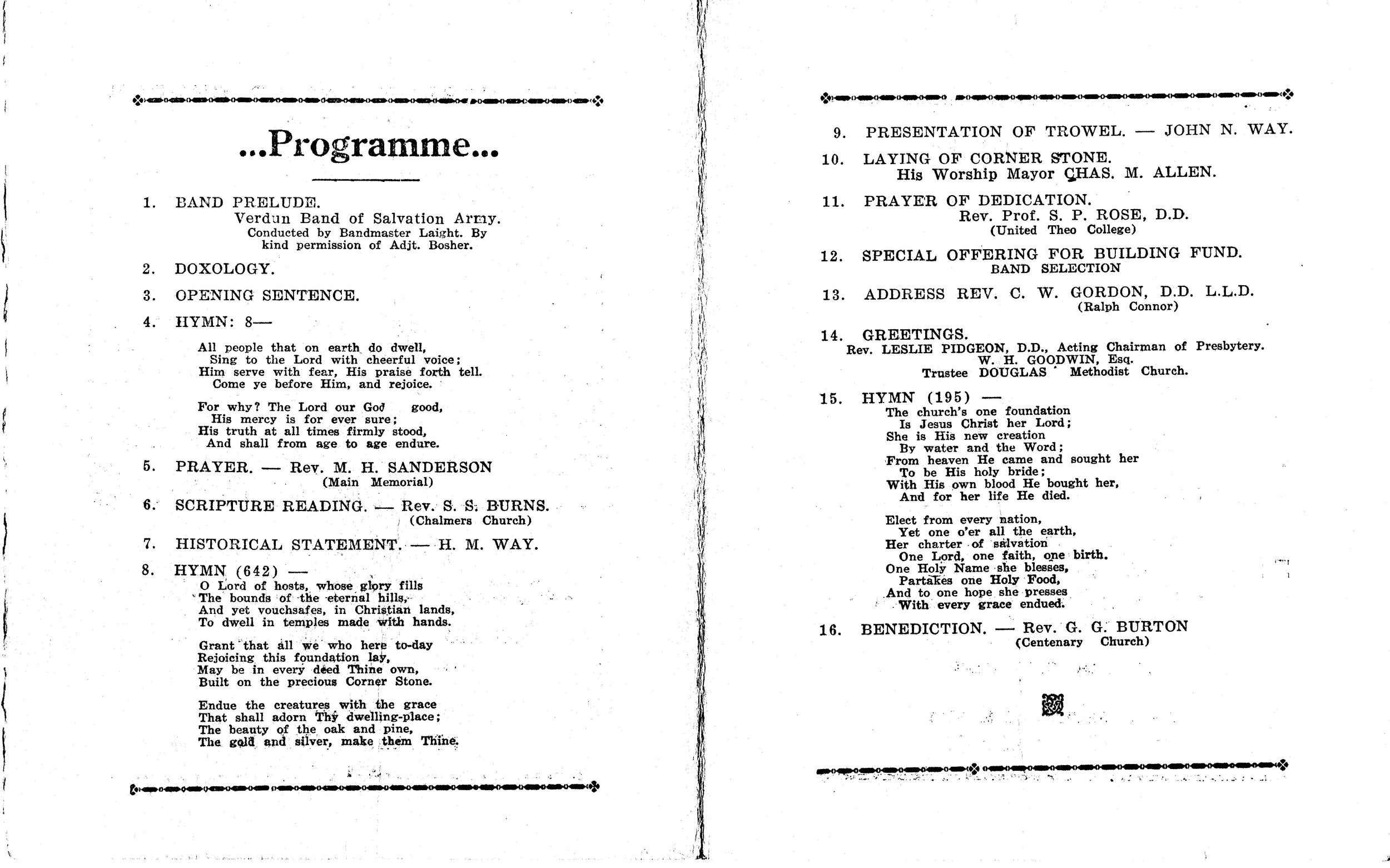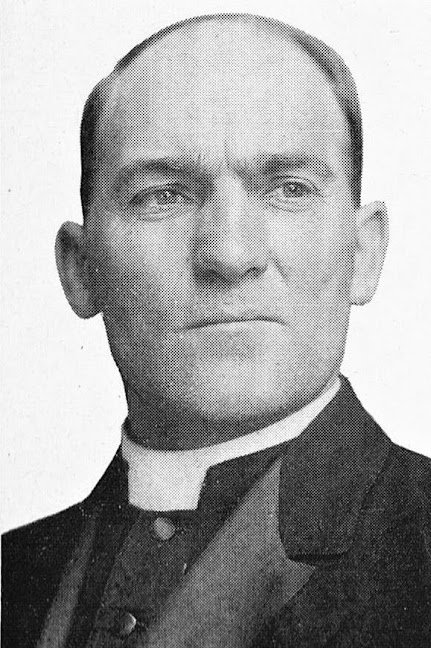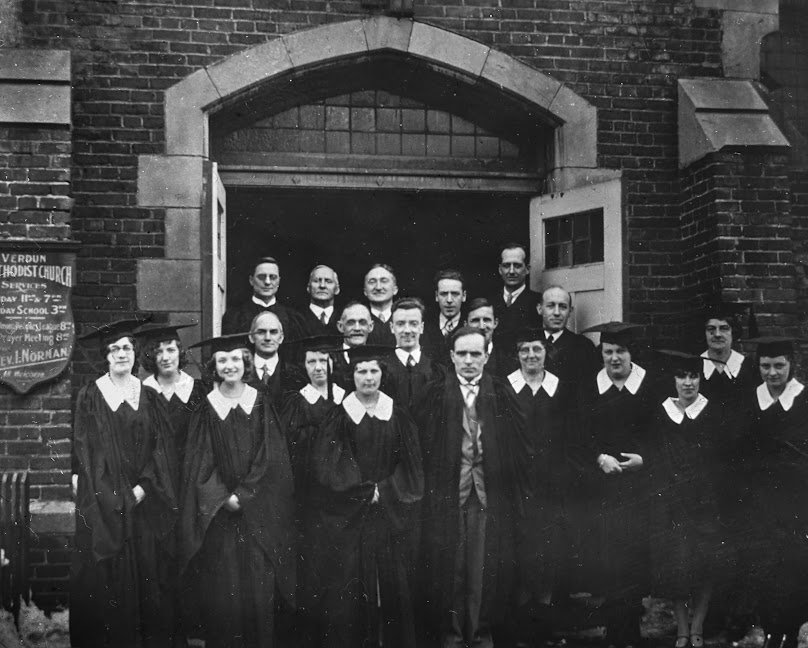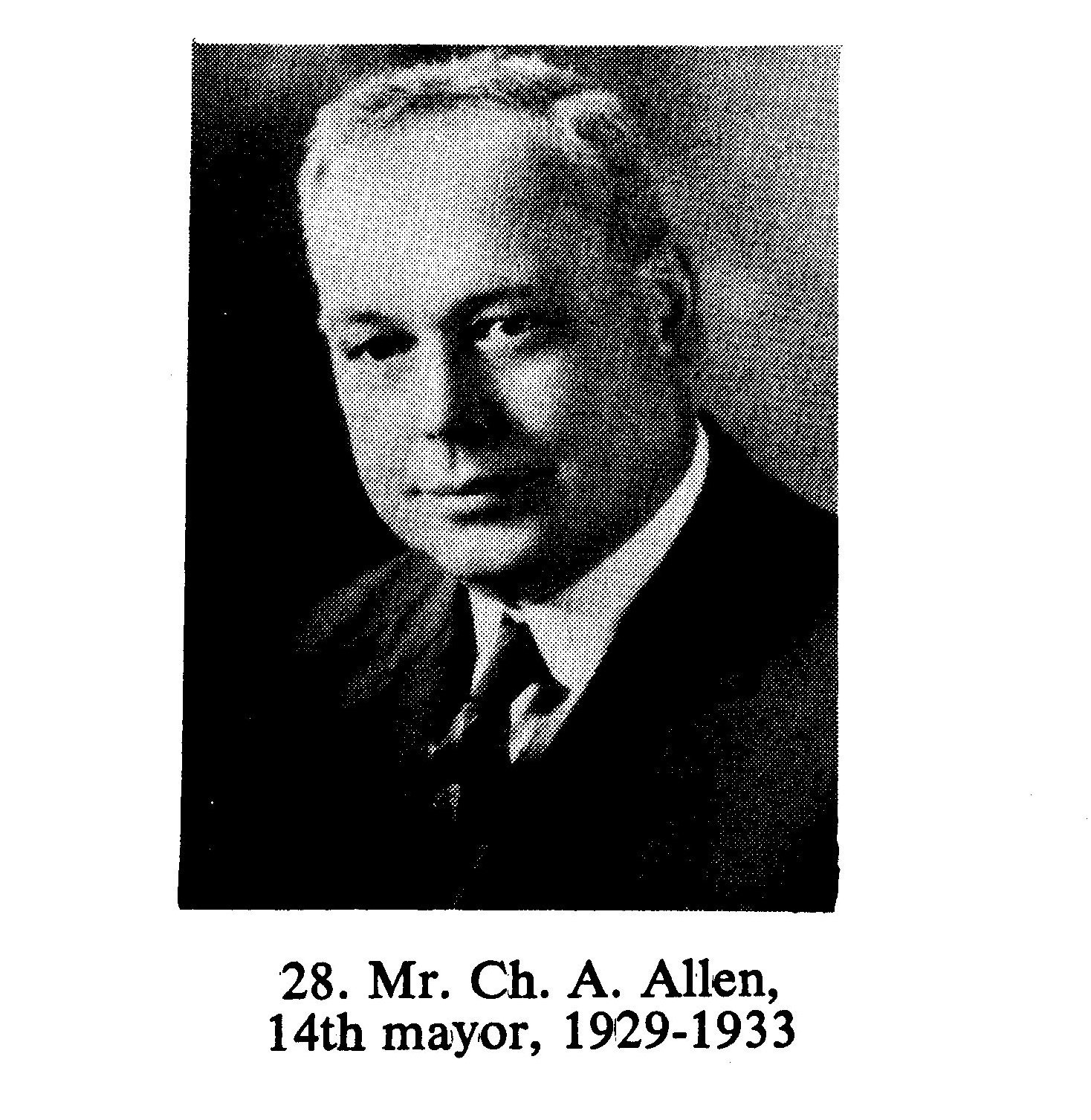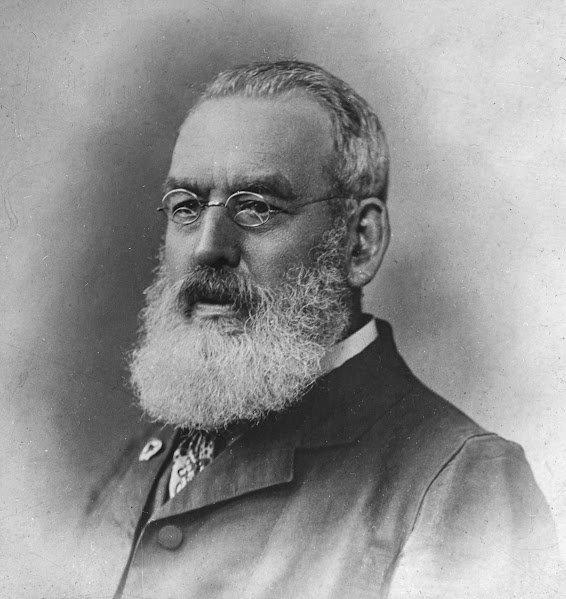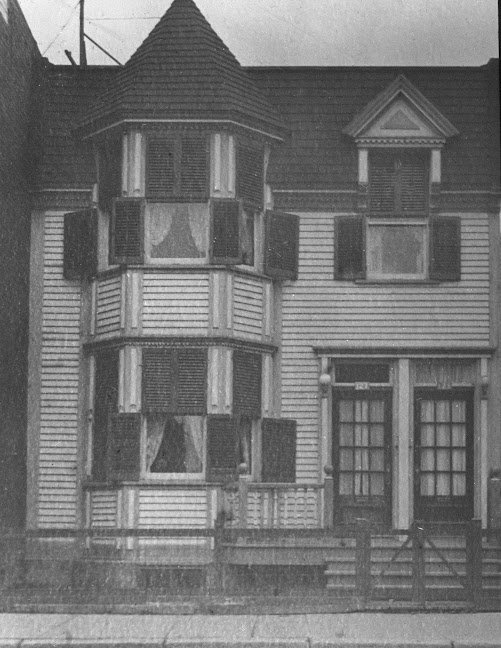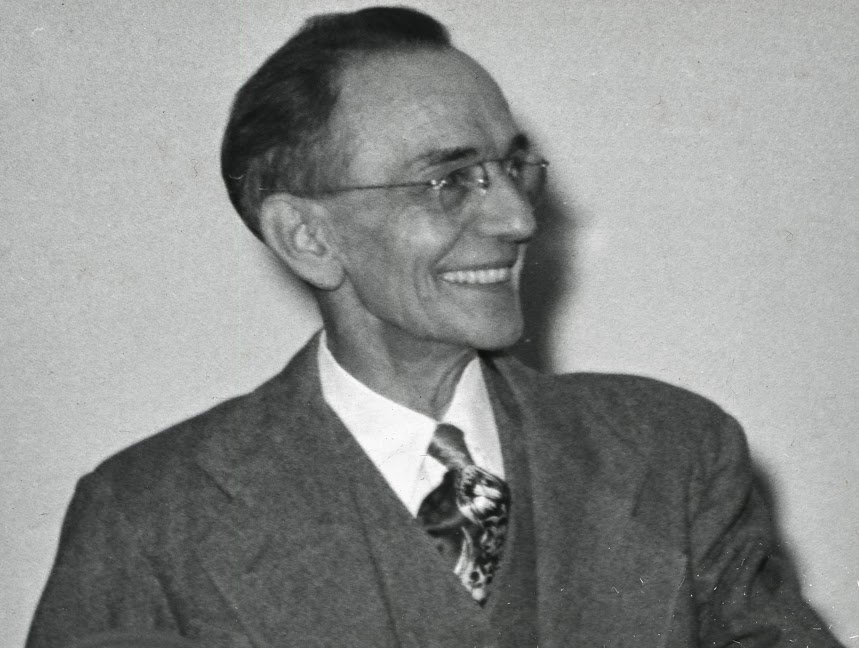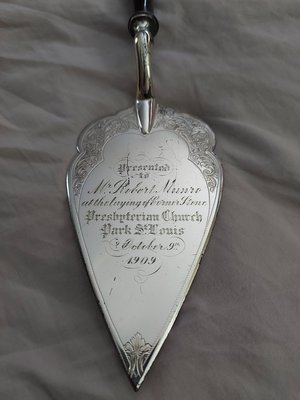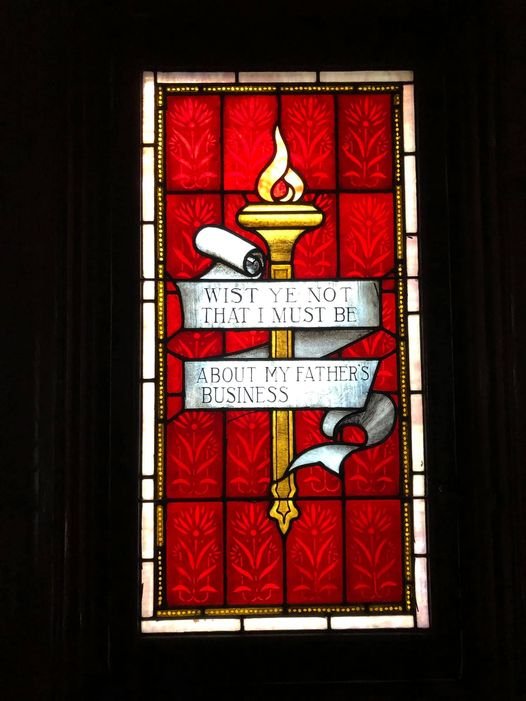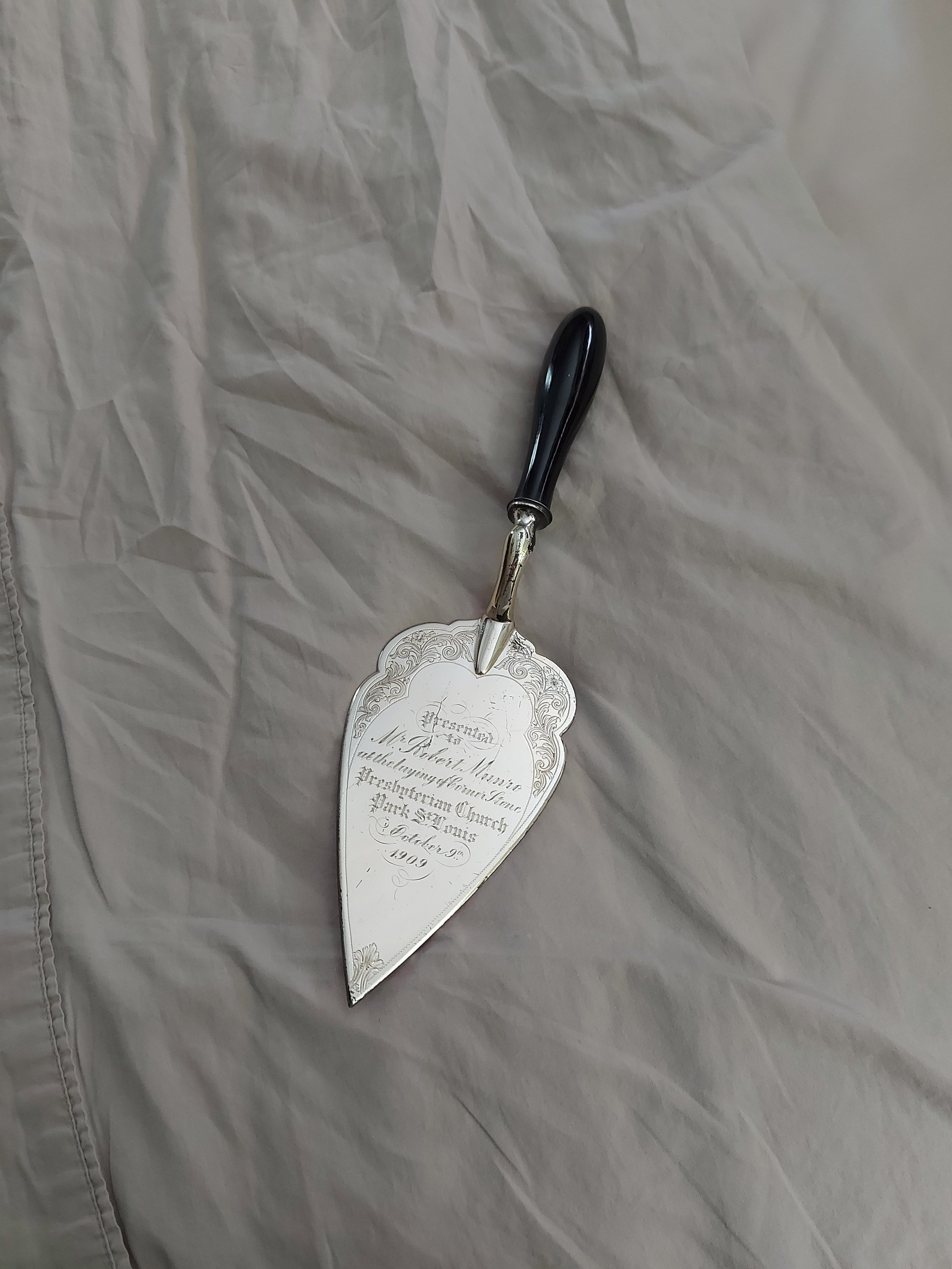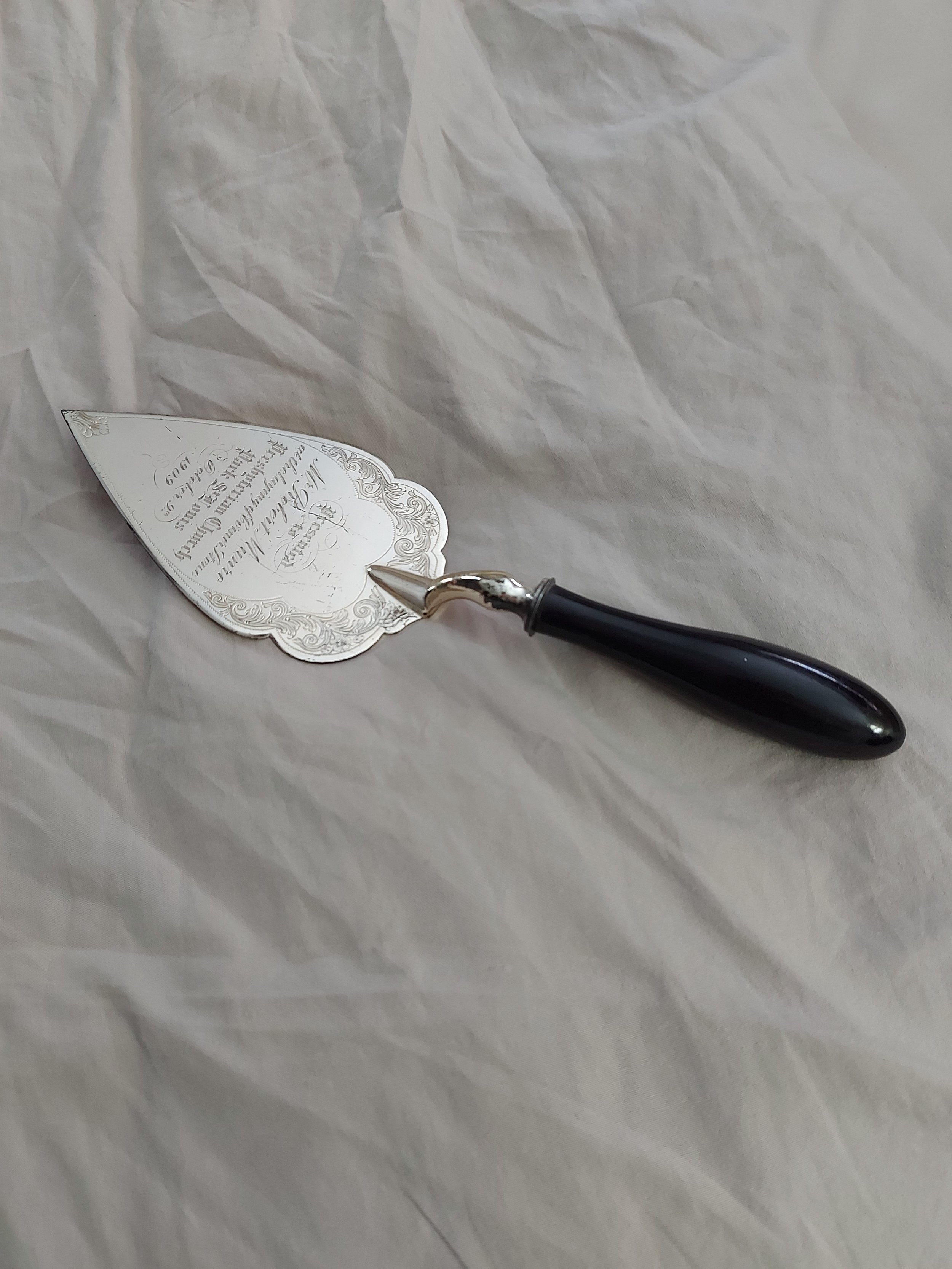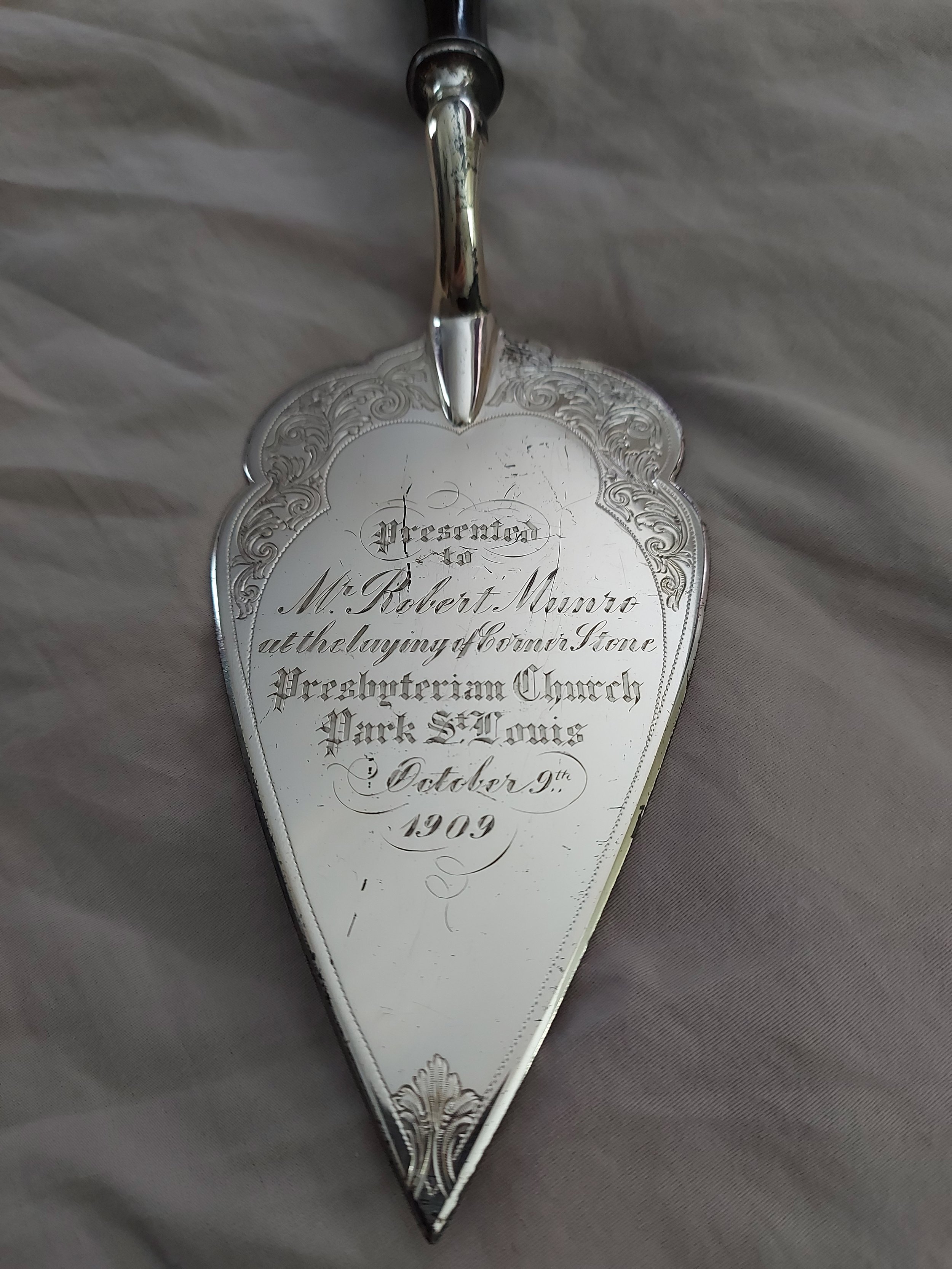
BLOG ..BLOGUE
News from SouthWest ..Des nouvelles du Sud-Ouest
A Glimpse into the 1930s
Recently, we celebrated the 75th anniversary of the laying of the cornerstone of our current building, which was then Crawford Park United Church. The other day, I stumbled across the bulletin for the service held at the laying of another cornerstone: the one at Verdun United Church, in 1930, over ninety years ago.
This was when they moved from Gordon Avenue to 650 Woodland. In fact the bulletin doesn’t even mention a street address; maybe there were so few buildings on Woodland Avenue at that time that a number would have seemed superfluous! Indeed, between Woodland Ave. and the Douglas Hospital, there would have been mostly empty fields in those days. The next two decades would see a population explosion and a building boom in Verdun.
The Cornerstone-laying service was held on September 20, 1930, and began, as these events seemed to do, with music from the Salvation Army Band. Several visiting ministers participated, including Rev. S.S. Burns of Chalmers United and Rev. G.G Burton of Centenary Church.
Rev. Isaac Norman, who had been with the congregation since 1924, saw the congregation safely into their new home. Sadly, within 18 months, he would be dead at the age of 62.
In a typed letter which seems to be addressed to then Mayor of Verdun Charles M. Allen, Rev. Norman writes, “On behalf of the Trustee Board of this Congregation it gives me great pleasure to ask you to accept this Trowel with which you are to lay the cornerstone of this Church.”
I am almost surprised that the trowel didn’t turn up in a box with the letter and the bulletin, but then, Mayor Allen would have presumably taken it away with him, so there’s no way of knowing what became of it.
This reminds me, though, of the silver ceremonial trowel that a SouthWest member recently found in her basement. It too was dedicated at the laying of a cornerstone , in this case of a Presbyterian church. I imagine the one presented to Mayor Allen may have been similar, by which I mean, better suited to serving cake than turning sod!
As we see in the bulletin, it was Mr. John Way who physically presented the trowel to Mr. Allen at the inaugural service. Mr. Way was a trustee, and an original member of the congregation: it was in his house on Church Ave./de l’Eglise that the earliest Verdun Methodist services were held in 1899. Also on the board of Trustees, as its secretary, is H.M. Way, who I believe was the son of John Way.
As Rev. Norman writes in his letter, Mr. C. Allen was the son of Mr. Joseph Allen, who had himself been Mayor of Verdun earlier in the century, and had laid the cornerstone of the second Verdun Methodist Church on Gordon in 1908.
We know that Mr. H.M. Way was still secretary of the trustees in 1937 because of the last item pictured below, a letter addressed to him and dated April 12th of that year.
“At an emergency meeting of the Choir,” writes Mrs. Wm. Marmon (Act. Sec.), “Sunday after evening service, at which Dr. Joyce and the Choir Committee were present, called to discuss the serious situation of choir members determined to stay away from choir rehearsals and on Sundays, owing to the cold condition of the Chancel, it was duly moved, seconded and unanimously agreed upon, that the Trustee Board be notified of this condition.”
Mrs. Marmon continues, “We pray and ask for their immediate attention to this serious situation which is detrimental to the choir members’ health, and affecting, in more ways than one, faithful service to the Church.”
If any response from the trustees comes to light, I will certainly share it with you.
Amy
75th Anniversary Service
Our building is 75 years old, and has been a United Church for all of that time. Although the Crawford Park congregation was founded a few years earlier, the first service was held in what is now the hall of this church in November 1947. When the upper sanctuary was completed five years later, it was inaugurated in November of 1952. Our Nov. 13 service will be devoted to remembering our church history. All are invited to share a particular story or memory.
Crawford Kids
I believe I’ve shared the photo below before. It dates from 1946 and depicts the Crawford Park Wolf Cub Pack with their leaders. In the past I was only able to identify the couple at the back as “the Wilsons” but documents that recently came to light gave me their first names. They were William H. and Noreen Wilson, and I believe they lived on Crawford Bridge, which is where this photo would have been taken. I have not been able to identify the house exactly. According to the scrapbook I found, the Wilsons, known to the boys as “Akela” and “Baloo” led the pack at least until 1952.
Memories and Mysteries
We have begun the somewhat melancholy task of going through all the moveable objects in the church (newsflash: there are a lot of them) and making decisions about where they will go. As mentioned before, if you or your family have dedicated hymn books or anything else to the church and would like to have them back as keepsakes, contact the office.
Other things are coming to light that have dedications, but the names don’t ring a bell. Pictured below is a silver vase for a flower arrangement with the following dedication: in loving memory of Mum and Dad, Mr. and Mrs. Robert Stevenson, from daughter, Mrs. G. Gellately, Crawford Park United Church. If anyone knows this family and has any idea how to contact them, please let the office know.
There are also several original pieces of art on the walls that will be offered back to the artists, if we know them. There is a lovely scene with a sailboat that always makes me think of Newfoundland. The painting, which has been in the church for decades, is signed Dot McInnis. Does that name mean anything to anyone?
So much for the mysteries. Here’s a memory for anyone who once attended Chalmers United on Church Street. I found this photo of a stained glass window on the Facebook page of the Montreal Korean United Church, which of course is the current owner of that building. I love the brilliant reds and golds. It reads, “Wist ye not that I must be about my Father’s business”
Amy
Voice of Wesley Radio in Newfoundland: The Continuing Saga
A few years back I wrote a blog post about Rev. J.G. Joyce who, before coming to Verdun, founded a radio station in Saint John’s in order to broadcast his services to members of the congregation who could not, for one reason or another, get out to worship. That radio station, VOWR, still exists and is approaching its centenary. I stumbled upon this CBC story from 2018 about a young musician’s experience working on air and as a general factotum at the station, and thought I’d share it.
How I found my groove at a century-old church radio station
by Kenney Purchase with Sarah Smellie
Letting a record play while heading to the bathroom at VOWR is a dangerous game.
I can't even count the number of times I've sprinted at full speed from one end of the station to the other, rushing back to the studio from the washroom as a song is coming to an end.
One night, I let a Beach Boys record play for a little too long while hosting a popular easy listening show. Smiley Smile is a weird one in the Beach Boys discography, and when Good Vibrations ended, a bizarre interlude began.
I managed to get into the studio just as the phone started ringing.
"Stop playing that Jesus Halloween music, it's August!"
VOWR first crackled onto the airwaves on July 24, 1924.
The station was started by Rev. Dr. J.G. Joyce, then the pastor of the Wesley Methodist Church — now the Wesley United Church — as a way to bring services to congregation members who, for whatever reason, couldn't make it in to the church on Patrick Street.
He was a real pioneer. According to the station's history books, he rigged up a way to broadcast his sermons straight from the pulpit to people's telephones. In solving that technical problem, he created a social one: lots of folks seemed to think the transmissions were the work of the devil.
But he managed to convince them otherwise.
VOWR now broadcasts across the province 24 hours a day. Sixty-odd volunteers breathe daily life into the station, most of them 30 or 40 years older than me, and you never know what you'll hear when you tune in.
The usual mix is old-school easy listening, from folk to classical music to church hymns. But there are some real oddballs in the library that give VOWR its undeniable charm.
Like classical pieces with the orchestra swapped out for a band of dinky synthesizers, or an out-of-place new-wave version of The Phantom of the Opera, which sounds closer to Depeche Mode than it does to an Andrew Lloyd Webber piece.
Soul Bossa Nova by Quincy Jones, redefined by my generation as the theme music for the Austin Powers movies, is a frequent hit. So is the The Benny Hill Show theme song, where I can't help but picture a cartoonish chase sequence the moment that saxophone comes in.
I've found some real gems in that library, some which I can't find any record of online.
The darkness of April's Angel Food Cake, an album by New Brunswick country singer Norma Gale, made me stop the tape mid-song and rewind it.
The Sanderlings were a Newfoundland band of siblings in the 1960s, way ahead of their time. While many other bands here were recording traditional music, these guys were playing catchy pop songs.
Go to the original CBC story to read more and see pictures.
The Oldest Methodist (United) Church in Canada
The following is shared from the United Church of Canada website.
Small Church With Big History Attracts Pilgrims
Since Jesus first walked on this earth, Christians have been spiritually drawn to make pilgrimages to places connected to his birth, life, crucifixion, resurrection, and legacy. Today, pilgrimage hot spots include Oberammergau in Germany, Lourdes and Taizé in France, and of course the Holy Land.
Here in Canada, thousands of Christian pilgrims make their way to the small town of Napanee, ON, to visit Old Hay Bay Church each year. The last Sunday in August is the highlight of the season, when the church hosts its annual pilgrimage service.
What’s the attraction? It’s a mix of the history, scenery, spiritual connection, and community.
An unassuming building clad with greyed wood siding and wide doors that open to a plain but sturdy sanctuary, Old Hay Bay Church was originally built on the shoreline of Hay Bay, which connects to the Bay of Quinte, in 1792. It is the oldest Methodist building―and one of the oldest churches―in Canada. Now, it belongs to The United Church of Canada, and your generosity through Mission & Service helps ensure that it will continue to be a place of pilgrimage for years to come.
Elaine Farley, chair of the Board of Trustees and one of the church’s custodians, explains that the building, originally referred to as the “meeting house,” was the centre of the rapid growth of Methodism and hosted the first camp meeting in 1805. “Methodism grew into the largest Protestant group in Canada and was the largest communion that became the United Church in 1925,” she says. “The Founders reflect any United Church congregation today. They came from various countries of origin and had a wide variety of skills and knowledge, but together they made a strong voice, speaking of God, their community, and their future.”
Farley warns that she could enthusiastically “go on and on” about why the small church in rural Ontario is so important, but she sums it up with three short sentences: “Old Hay Bay Church has earned its place in the history of Methodism and The United Church of Canada. It is not just a building but also a sacred place of our ancestors, as well as a pilgrimage place for us and our descendants. It has a special place in peoples’ hearts.”
Thank you for helping to preserve important historical, theological, and pilgrimage sites through your Mission & Service gifts.
August 1st is Emancipation Day!
On June 19th, our American neighbours celebrated Juneteenth, a day that celebrates the emancipation of enslaved African Americans in 1865. Proclaimed a federal holiday by President Joe Biden last year, Juneteenth got quite a lot of attention, even in Canada. A federal holiday of our own was also made official in 2021: Emancipation Day is celebrated on August 1st, but many Canadians still don’t know what it’s all about.
There are still people in this country who believe that we never had slavery here. Technically, we didn’t have slavery in Canada, but only because “Canada” came into being in 1867, after slavery was abolished in virtually all the colonies in the Americas. But that doesn’t mean there weren’t enslaved people on this territory when it was called British North America, or before that, New France.
It's easy to tell ourselves that slavery was a Southern institution, that the Northern British colonies, including those in present-day Canada, were opposed to it. In fact, the Abolitionist movement only got going in the late 18th century, 200 years after the first settlements were established in the New World by English, French, Dutch, Spanish and Portuguese colonists. All of these empires participated in the transatlantic slave trade which began around 1500.
It is fair to say that we didn’t have slave ownership in the same numbers in Canada as they had in the United States, but that is a far cry from having none. And surely even one enslaved person is too many.
Although France prohibited slavery on its own shores, in 1688, Louis XIV granted New France’s petition to begin importing people from West Africa as slaves. Although no shipments ever actually came directly from West Africa to Nouvelle France, colonists here acquired slaves from other French and British colonies.
Britain was similar: it was not very common to see enslaved people in the mother country, but the British empire was built on the backs of enslaved people working on cotton, sugar and tobacco plantations in the Caribbean, North and South America.
Well before the British conquered the French in North America in 1760, there were already many people living in slavery in New France. Some were of African descent; others were Indigenous.
As Canadians, we may decide that June 19, 1865 is not a significant date for us (although there are many Canadians who are descended from former American slaves), but we might want to pay attention to a few other dates:
In 1794, Revolutionary France abolished slavery throughout its empire, only to have it reinstituted by Napoleon in 1802. (Haiti declared itself independent from France in 1804 and became the first country in the Americas to abolish slavery). The French re-abolished slavery throughout their empire in 1848.
Britain (and the United States) outlawed the international slave trade in 1807, meaning they would cease the practice of kidnapping and enslaving free African people, but this law made no change to the status of the hundreds of thousands - maybe even millions- already living in slavery in British colonies. (Several Northern states and the province of Ontario did outlaw or limit slavery in the late 1700s).
In 1833, Britain abolished slavery throughout its empire including in British North America.
This is our history of slavery. It was legal and existed in much of what we now call Canada and Quebec from the earliest settlements in the 1500s up to 1833. We got the jump on abolition over the United States by about 30 years. That’s hardly a source of bragging rights, and a far cry from the erroneous claim that we never had slavery here.
The Slavery Abolition Act came into effect throughout the British empire on August 1st, 1834. This August 1st, we should go ahead and celebrate 188 years since emancipation, as long as we recognize the history of slavery, right here at home, that necessitated an act to abolish it.
August 1st is not just a Canadian holiday. Emancipation Day is celebrated throughout the former British Empire. In 1985, Trinidad and Tobago became the first country to officially declare it a national holiday .
The internet has lots of resources to learn more. Here are just a couple: Montecristo Magazine ; Canadian Heritage
Image: Black Canadians celebrate Emancipation Day in Amherstburg, Ontario in 1894. Photo by Andrew Merrilees/Library and Archives Canada.
"For King and Country"
Two of our most prized possessions at SouthWest United are the framed, poster-sized documents that came to us in 2007 through the amalgamation of Verdun United with Crawford Park United. The first lists all members of the congregation of Verdun Methodist Church who signed up for service in the Great War, 1914-1918. It also indicates, in red, those who were killed.
The second is similar, listing all from Verdun United who volunteered for active service in World War II (1939-1945). This time, those who died are identified by a star beside their names.
Taking a close look at them recently, I began to wonder: who did the artwork on them? Were they designed by someone local and ordered from a local printer, or were they produced in great numbers for churches all across the country?
A Google search provided some answers about the one from the Second World War. I learned that the identical print can be found hanging in schools, churches, and civic organizations across the country. One thing I hadn’t noticed until I did some reading about these posters, was one additional name, appearing at the very bottom under a small crest that bears the Union Jack and a maple leaf. “A.J. Casson” it says.
Alfred Joseph Casson (1989-1992) was the youngest member of Canada’s Group of Seven landscape painters. What is his name doing on this patriotic print?
Well, like many artists, even very successful ones, Casson had a day job during most of his career. In 1926, a young Casson had taken a management position with Sampson-Matthews, a prominent midtown Toronto lithography and commercial art company.
According to a Maclean’s article from 2018, “In the aftermath of WWII, Casson took it upon himself to design a template for an honour scroll that could be filled out with veterans’ names from particular schools, congregations and other organizations. According to historians and Casson’s daughter Margaret, Sampson-Matthews printed these scrolls in the hundreds or perhaps even the thousands.
Read more about A. J. Casson on Wikipedia
See some of his paintings on the site of the McMichael Canadian Art Collection
ROLL OF HONOUR
So much for World War II, what about that poster from World War I?
Well for that one, I didn’t find any exact replicas in my internet search. Many churches have such memorials, but they all seem to be different. Perhaps my theory about local artists and printers is close to the truth when it comes to these scrolls. Casson would certainly have known of their existence, so perhaps they inspired him to design one to honour the dead of the war that came all too soon on the heels of the first one.
Our Roll of Honour scroll does not have a signature at the bottom, so unless we can uncover some mention of it in old papers, the artist’s identity may remain a mystery. Either way, it is a moving and quite beautiful piece of church and local history.
Next time you’re at church, why not take a moment to appreciate the sacrifices of veterans, and the contributions of artists - known and unknown - to preserving their memory.



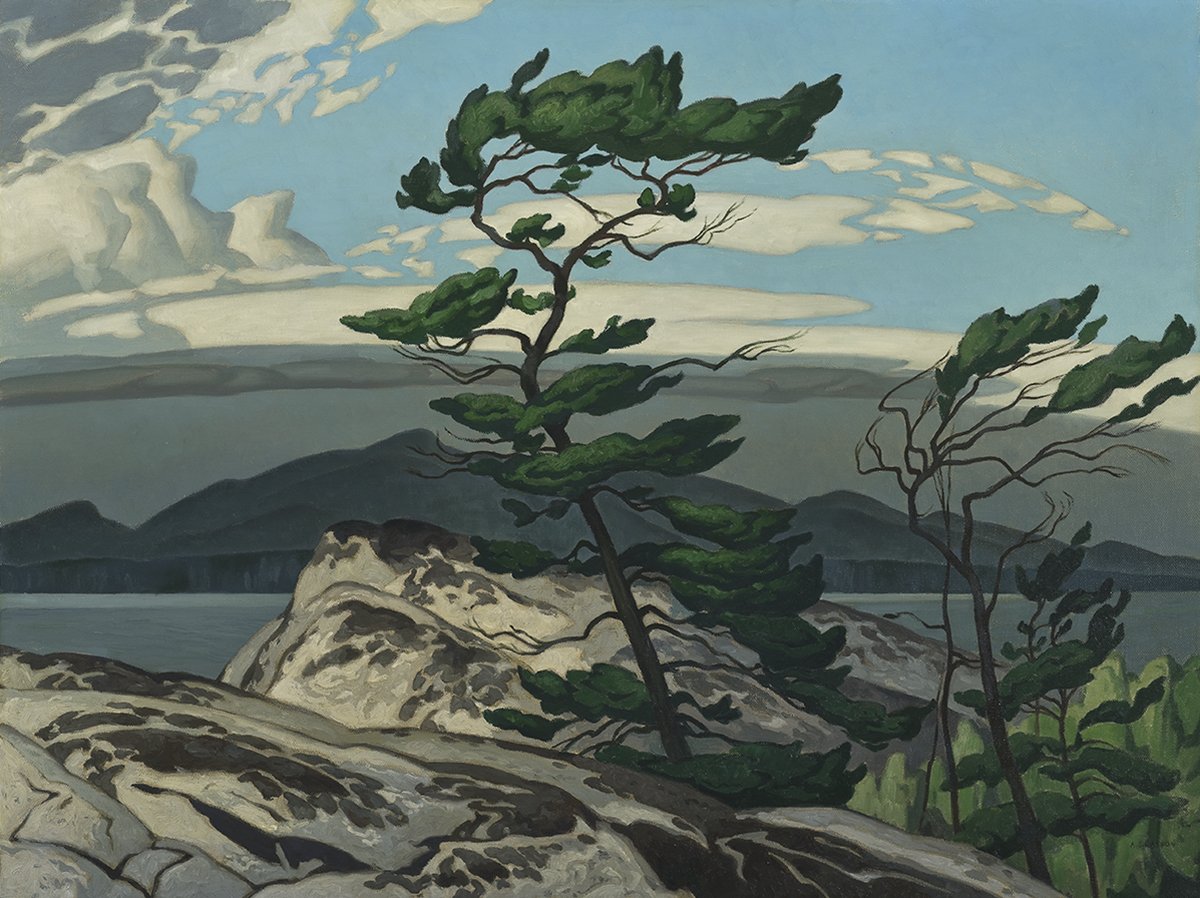

History Mystery
“This goes under the caption, ‘things I found in my basement,” says Aline. She is cleaning out the house that once belonged to her in-laws, and there is no telling what could turn up. Aline thought we would be interested to see this ceremonial trowel with the following inscription:
"Presented to Mr. Robert Munro at the laying of the church cornerstone, Presbyterian Church, Park St. Louis, October 9, 1909"
We believe that Park St-Louis is an old name for part of Lachine near the waterfront, but we have not been able to find a Presbyterian church that would have been established there in 1909. Aline doesn’t believe Robert Munro is any relation to her in-laws, so the provenance of the trowel is a mystery. Any feedback from those with longer memories would be welcomed!
Aline passed the trowel on to Douglas Hastie, knowing that his background was in Verdun’s First Presbyterian. Doug will pass it on to his brother in Ontario who will offer it to the Presbyterian museum.



